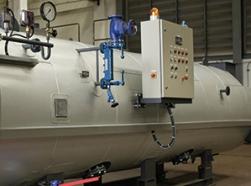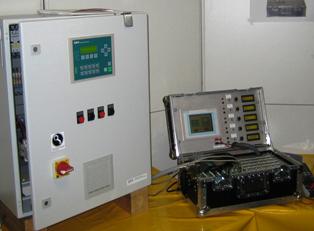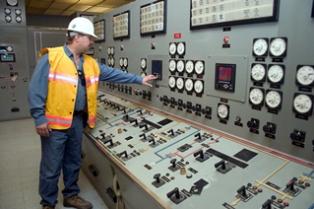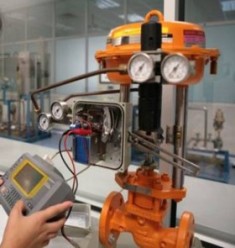Categories: Featured Articles » About electricians and not only
Number of views: 57392
Comments on the article: 3
What is instrumentation
 Almost all modern technological equipment is automated. These are CNC machines, automatic production lines, automated boiler rooms, water supply pumping stations, gas pipelines, power supply systems and much more. A lot of automated equipment at metallurgical plants, in transport in mechanical engineering and in the automotive industry.
Almost all modern technological equipment is automated. These are CNC machines, automatic production lines, automated boiler rooms, water supply pumping stations, gas pipelines, power supply systems and much more. A lot of automated equipment at metallurgical plants, in transport in mechanical engineering and in the automotive industry.
Modern automation is most often performed on microcontroller control circuits, which replaced the control units on microcircuits of a small degree of integration. And this is not just a fashion or a tribute to time. Such a replacement allows you to automate almost everything. But the microcontroller is not everything. Typically, automated equipment is connected to a computer, which in turn is connected to a computer network.
Automated not only production equipment, but also household appliances. An ordinary washing machine - the machine contains an electronic control unit, the same can be said about modern household heating boilers, fans, heating radiators and air conditioners. Recently popular bread machines, microwave ovens, slow cookers and a miracle - pans are also automated. Even some models of irons have digital temperature indicators. This is how far automation has gone.
But with all the splendor of microcontroller systems, they would be simply blind, deaf and dumb, if not for the equipment for collecting data on the state of the object. In this case, we are talking about measuring sensors and actuators, coordinated with the control controller.
The main task of instrumentation and control equipment is to obtain information about various physical quantities, the state of the control object, enter this information into the control unit and its further processing. This information is obtained using various sensors. A non-electric quantity, for example, temperature, pressure, flow rate of a liquid or gas, a liquid level is converted into an electrical signal suitable for input to a controller.

Even electrical quantities, voltage and current, cannot be entered into the controller without conversion to a standard analog signal. After all, it is simply impossible to immediately supply the voltage of 220V to the controller’s input, so you have to convert it using a sensor! The same can be said of current measurement. It turns out that currents and voltages are also physical quantities, sort of like non-electric.
It’s simply impossible to list and recall the whole list of devices right away, you get a very long list. All together, this can be called instrumentation or abbreviated instrumentation. And along with automation, “AI” is also added to this reduction. All together stands for "Control Measuring Instruments and Automation". Hence the reduction began Instrumentation.
And everything would be fine, but all this instrumentation and automation, however, like everything else in the world, has a bad ability to become worthless, simply to break. Even a conventional mechanical spring manometer begins to show over time, to put it mildly, not what it really is, or the temperature regulator ceases to maintain the set temperature. And then the faulty device must be replaced with a new one, or sent for repair (in an almost artisan workshop, it is almost impossible to repair a pressure sensor of accuracy class 0.1). This is exactly what the instrumentation and automation specialists do. The main character in this situation is the fitter of instrumentation and automation, or even the whole labor collective.

Stable and accurate operation of instrumentation and automation equipment is the key to the normal operation of technological equipment and high quality products. In addition, the accident-free and safety of the staff is ensured.
Organization and tasks of the instrumentation and automation service
In large enterprises, the instrumentation and automation service is, as a rule, a separate independent unit. Different laboratories and departments are engaged in various equipment: one laboratory specializes in the repair and calibration of electrical measuring instruments, the other deals with pressure gauges and pressure sensors, the third maintains and repairs boiler equipment, etc. At the same time, it would never occur to anyone to force “boiler workers” to repair electric meters, and gas analyzer specialists to repair liquid or pressure sensors only on the basis that all this is based on microelectronics: “Come on, you know!”.

The instrumentation and automation service of a small enterprise looks quite different. As a rule, these are a few people, technically competent and highly qualified, whose task is to maintain and repair a relatively small "range" of equipment. It can be called the main one, it was it that was stipulated in the employment contract when hiring. But after employment it turns out that this list is far from complete.
If the main equipment is, for example, a water supply automation system, and these are controllers, sensors, data lines, often even radio modems (objects are far away, but you need to manage them somehow), then soon enough there will be many different similar and secondary forces tasks. This is telephone communication, from laying lines to repairing apparatuses, video surveillance systems and burglar alarm. Xeroxes, faxes, modems, and even ordinary lights can also be here, and for the New Year also Christmas garlands.
And if the instrumentation and control mechanic is a confident computer user, and even a little familiar with programming, then he will not get away from servicing computers and setting up computer networks. Therefore, it is better not to show all your knowledge and skills at once, let alone boast of them. Such behavior most often leads to the appearance of additional responsibilities, expanding the scope of activities and increasing the number of “non-profit transactions”.
More information on the work of the instrumentation and automation engineer will be described in the next article.
Continuation of the article:Profession Fitter Instrumentation
Boris Aladyshkin
See also at i.electricianexp.com
:

